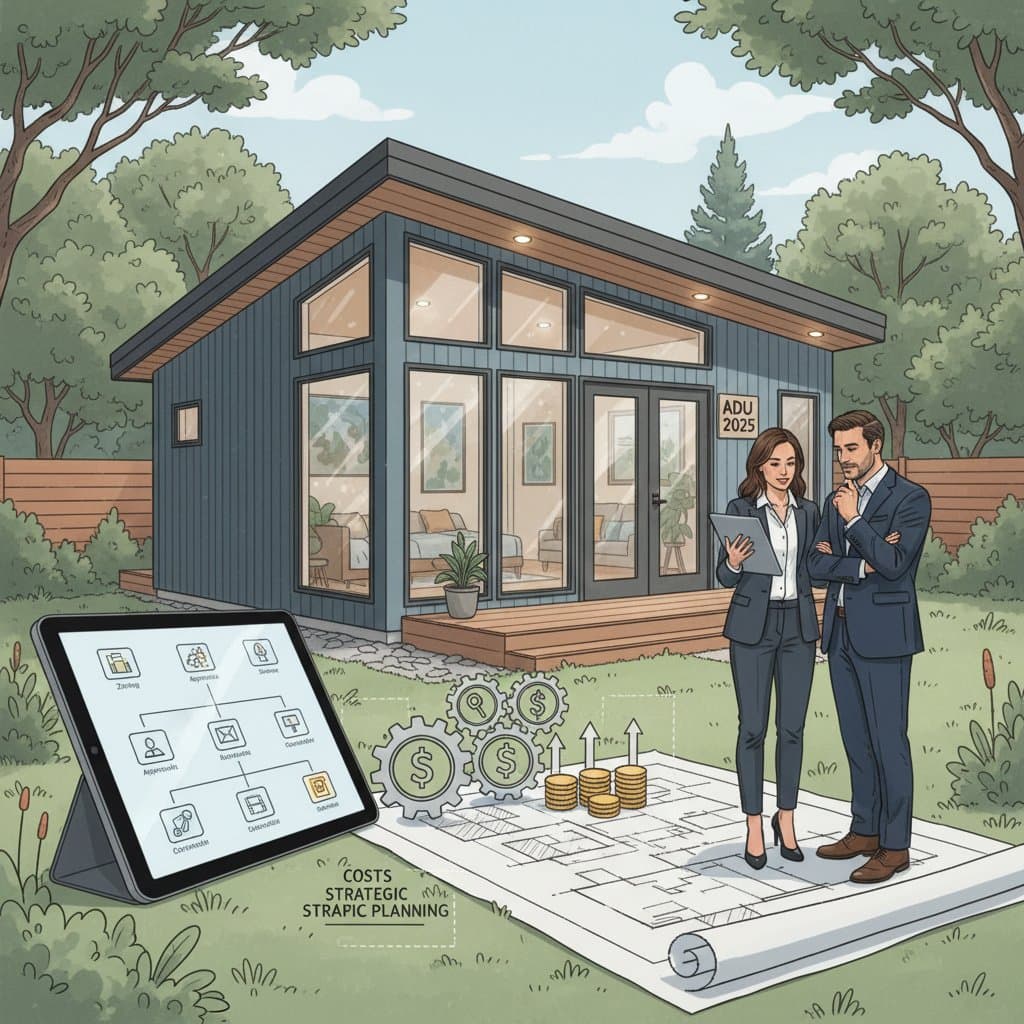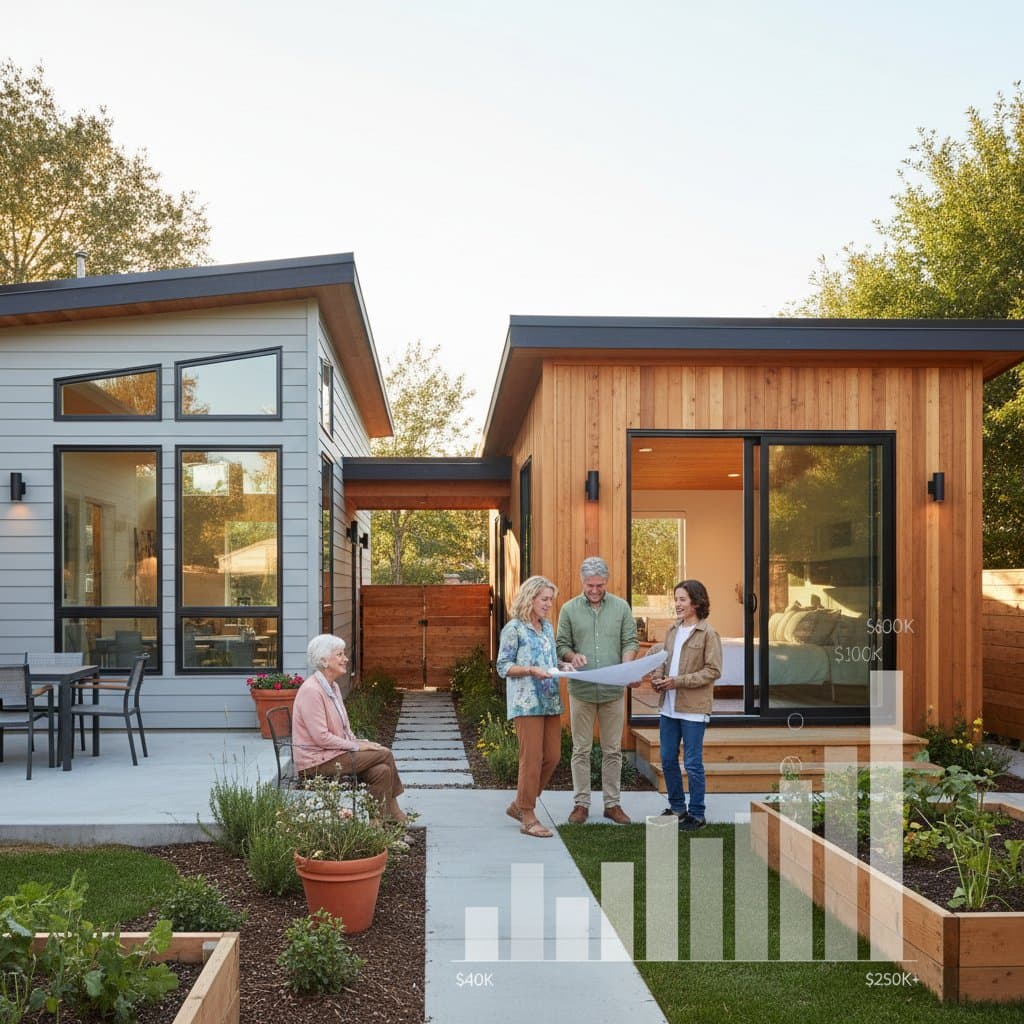2025 Granny Flat Construction: Costs and Permit Insights
Building a granny flat, also known as an accessory dwelling unit or backyard cottage, adds valuable living space and delivers long-term financial benefits. The process extends beyond basic construction to include budgeting, regulatory compliance, and detailed contract reviews. Homeowners who develop a systematic plan minimize surprises and safeguard their investment.
What Is a Granny Flat and What Does It Entail?
A granny flat consists of a self-contained living unit on the same property as the primary residence. It features a kitchen, bathroom, sleeping area, and separate entrance. Designs vary from compact studios to two-bedroom units with full amenities.
The full scope encompasses architectural planning, permitting, site preparation, utility hookups, and inspections. Multiple professionals contribute, such as general contractors, electricians, plumbers, and surveyors. Each brings unique billing practices and liability considerations, which influence overall cost projections.
Breaking Down the Cost Components
Effective budgeting accounts for more than the initial construction quote. Consider base construction, soft costs, and future maintenance expenses.
Base construction costs fluctuate based on size and quality. Standard builds typically cost between $200 and $400 per square foot. Opting for custom features, sustainable materials, or challenging terrain increases these figures.
Soft costs cover design fees, engineering, soil tests, and permits, often amounting to 15 to 25 percent of the total budget.
Utility connections frequently catch owners off guard. Extending water or sewer lines, or enhancing electrical capacity, might add $3,000 to $15,000. If current systems prove inadequate, costs escalate quickly.
Financing options, like home equity or construction loans, introduce interest during development. Evaluate rates and terms to confirm project affordability.
| Cost Category | Estimated Range | Key Considerations |
|---|---|---|
| Construction (per sq. ft.) | $200 to $400 | Influenced by design and site factors |
| Design & Permits | 15% to 25% of total | Encompasses engineering and reviews |
| Utility Connections | $3,000 to $15,000 | Depends on existing infrastructure |
| Site Preparation | $5,000 to $20,000 | Covers grading and foundations |
| Contingency Fund | 10% of total | Addresses delays or adjustments |
This breakdown illustrates interconnected expenses. Allocate a contingency fund to manage unforeseen issues.
Navigating Permits and Approvals
Permits represent a challenging element of granny flat projects. Local rules vary, with building departments enforcing distinct zoning and safety standards.
Begin with a planning review to verify property eligibility. Assess lot size, setbacks, and height limits. Jurisdictions may cap unit size, occupancy, or require aesthetic alignment with the main house.
After planning clearance, proceed to building permits. Submit drawings, structural data, and utility schematics for evaluation. Fees operate as fixed amounts or scale with project value.
During construction, schedule inspections at critical points: foundation, framing, and completion. Non-compliance prompts delays and additional fees. Maintain ongoing dialogue between contractors and officials to stay on track.
Key Limitations and Exceptions in Regulations
Approvals come with constraints. Zoning may prohibit short-term rentals or non-family residents. Utility companies might mandate separate meters, affecting billing.
Projects in sensitive zones require extra steps, such as stormwater controls or tree preservation. Overlooking these invites fines or remediation expenses.
Review insurance policies carefully. Standard homeowner coverage may exclude construction or secondary units. Secure a builder's risk policy to protect against theft, fire, or injuries on site.
Assessing Financial Impacts and Future Benefits
Granny flats offer rental potential or family housing, yet require precise financial planning.
Calculate total ownership costs, including yearly upkeep, tax hikes, and premium insurance.
Analyze rental yields against loan interest and repairs to project payback periods.
Consider depreciation and market appeal. Additions boost value, but appraisers apply cautious estimates.
Address taxes early: Rentals trigger income reporting and possible reassessments. Engage a tax advisor to avoid complications.
- Tally all upfront and recurring expenses.
- Project income streams realistically.
- Evaluate property enhancement effects.
- Review fiscal obligations with experts.
Selecting and Vetting Contractors
Choose contractors based on verifiable qualifications, not promotional materials.
- Confirm licenses and insurance via official records.
- Request itemized bids detailing materials, labor, and subs.
- Scrutinize contracts for payment plans, change protocols, and deadlines.
- Contact references to gauge reliability and budget adherence.
Steer clear of vague lump-sum deals. Detailed breakdowns facilitate bid comparisons and expose potential overcharges.
Avoiding Risks and Pitfalls
Common errors derail projects and inflate costs.
- Inadequate site evaluations uncover foundation issues mid-build.
- Overlooking permit details halts work with penalties.
- Vague change records spark payment arguments later.
- Lowballing utility estimates strains funds at completion.
- Skipping contingencies leads to quality cuts.
Counter these by keeping a detailed log, documenting all exchanges in writing, and conducting frequent site checks with your team.
Upholding Quality and Ensuring Accountability
Establish quality benchmarks in contracts upfront, specifying brands, efficiency goals, and craftsmanship levels. Hire third-party inspectors for unbiased verification during phases.
Secure warranties: Labor often carries one year, materials longer. Familiarize yourself with filing procedures for prompt resolutions.
Steps to Secure Lasting Value
Approach granny flat development with precision to maximize returns. Scrutinize contracts thoroughly, verify every expense line, and archive all permissions.
This methodical strategy converts potential hurdles into opportunities, yielding a durable asset that enhances lifestyle and equity for years ahead.



